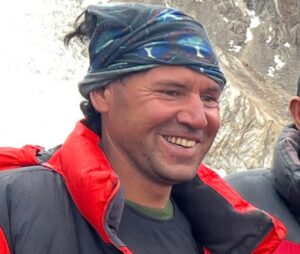A group of volunteer spelunkers has discovered the deepest cave in Canada. The team spent a week underground earlier this year, painstakingly mapping the 5.3km long, 670m deep cave.
The Bisaro Anima cave was first discovered in 2012 just north of Fernie, British Columbia, by mechanical engineer Jeremy Bruns. He and his father were on an expedition to check out caving opportunities in the area when they discovered a small crack in the ground. The narrow opening led into what appeared to be a huge cave system below.

“We’re finding new ways to climb mountains, but we’re not finding a lot of new mountains. We’re finding new caves all the time.” Bruns hopes his discovery will encourage more people to get in to caving. Photo: Jared Habiak
Bruns’ discovery led to the formation of the multi-year Bisaro Plateau Project. The cave’s remote location means that access is only possible via helicopter. Nevertheless, teams of cavers have made 10 separate trips to Bisaro Anima in order to help map out the cave. Their 2016 expedition eventually ran out of rope and bolts while trying to discover a limit to the cave’s depth. They returned in October 2017 with more equipment, only to discover a sump (flooded passage) 655m down.
The discovery meant a whole new set of logistical challenges. In order to continue to map the cave, they needed to get scuba equipment down to the sump. For this purpose, in early 2018, they organized their largest expedition to date, led by the president of the Alberta Speleological Society, Kathleen Graham.
Graham and Bruns were joined by Vlad Paulik, Colin Massey, Jason Lavigne, Jared Habiak, Mehdi Boukhal, Christian Stenner, and Jérôme Genairon. To get their scuba equipment down to the sump, the team set up three camps during their descent, and spent a week underground in perpetual darkness. Graham described their disorientating week underground as, “like hanging out in a refrigerator. It’s 100% humidity, 2oC, cold and dark.”
Though the majority of their equipment survived the descent, only one of their two oxygen tanks made it to the sump intact, forcing Graham to work quickly to conserve the little oxygen available. She was able to dive to a depth of 15m, confirming that Bisaro Anima’s total depth was at least 670m. This was enough to clinch the title of Canada’s deepest cave, formerly held by the 655m-deep Heavy Breather system, also near Fernie, B.C.
While diving in the icy waters, Graham observed a tube that reached even deeper underground, but with scant oxygen she was unable to explore further. Graham plans to return to the tube in the future. At nearly half a mile below the earth’s surface, both the dive and the return descent will be technical, but Graham is excited to see how much further the sump and the cave extend. The next expedition is already in the works, likely for this autumn, when cooling temperatures will make descending and camping slightly easier than during wet summer conditions.







